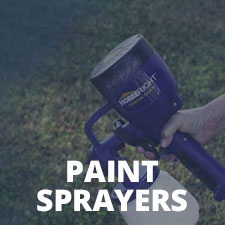
In modern times, paint is a multi-billion dollar industry, and there are numerous mediums available. From flat to gloss, matte to vinyl and everything in between, it’s intimidating choosing which type is best for your rooms.
You could go to your hardware store and grab a multitude of swatches and tester pots, but there’s no guarantee that the small square that you paint on your wall will provide the desired effect on the entire room.
To save you valuable time and money, I compiled this handy guide to the five main types of house paint and the finishes they provide. And what do you do with the paint when you are done? Dispose of it responsibly, of course!
More on that later, but first, let’s review the coatings themselves.
House Paint Type #1 — Latex
One of the commonest house paint types, this usually water based-coating is user-friendly and easy to apply, especially with a paint sprayer such as the Fuji 2804-T75G Mini-Mite 4. Most latex paints are water-based, but there are solvent-based versions available. Always check the tin to determine the paint’s suitability for the task at hand.
Latex is quick-drying and is resistant to elements such as sunlight. It offers the additional benefit of flexibility — this coating will expand and contract with temperature fluctuations.
Plus it comes in a plethora of colors and finishes, from flat to high gloss, so it’s easy to find the right finish and color. You’ll find that latex coatings sometimes have acrylic or enamel incorporated, an option that gives you the best of both worlds.
What Is Latex Paint Used For?
Pros
Cons
To learn more about suitable paint sprayers for this coating, discover the best paint sprayers for latex.
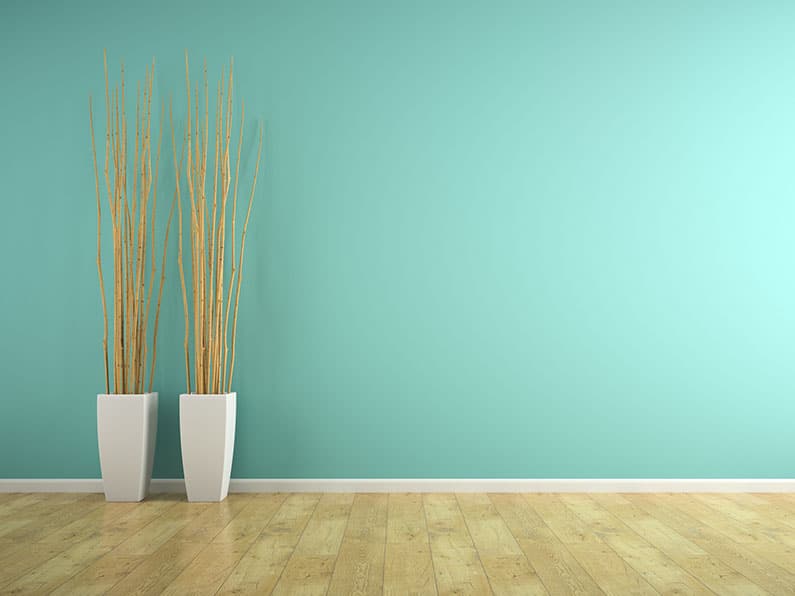
House Paint Type #2 — Acrylic
Acrylic house paints offer similar benefits to latex and work similarly, too. Acrylic is becoming more popular than latex, perhaps in part because of innovative coatings such as the FIXALL Acrylic Anti Slip Paint, which is composed of pigment suspended in a solution of resin and acrylic polymer solution.
Acrylic coatings also offer flexibility when it comes to varying temperatures and expand and contract even better than latex. However, clean-up requires a little more effort due to acrylic’s chemical composition. There may also be more fumes emitted.
Extremely quick-drying, acrylic is fantastic if you’re painting a small area with a sprayer such as a Powermate. Just note that acrylic won’t adhere to surfaces previously coated with an oil-based paint.
What Are Acrylic Coatings Used For?
Pros
Cons
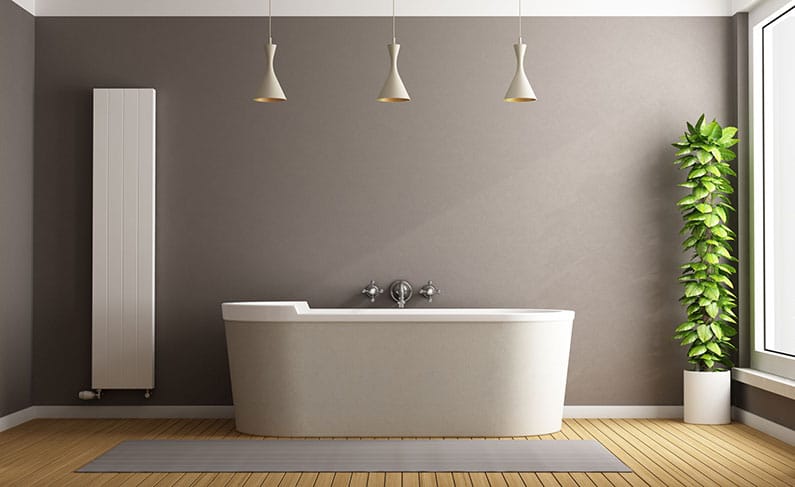
House Paint Type #3 — Enamel
Enamel coatings are either oil or water-based. The medium is unique because it dries from the inside out; the water-based version will dry in under eight hours but oil-based enamel needs between 8 and 24 hours.
Enamel is easy to work with, especially if spraying with a paint gun. Plus, enamel coatings such as the INSL-X Satin Sheen Cabinet Paint can be used without sanding or priming the surface.
What Is Enamel Paint Used For?
Pros
Resistant to cracking.
Cons
For a selection of spray guns to use with enamel coatings, read about the best sprayer for enamel coatings.
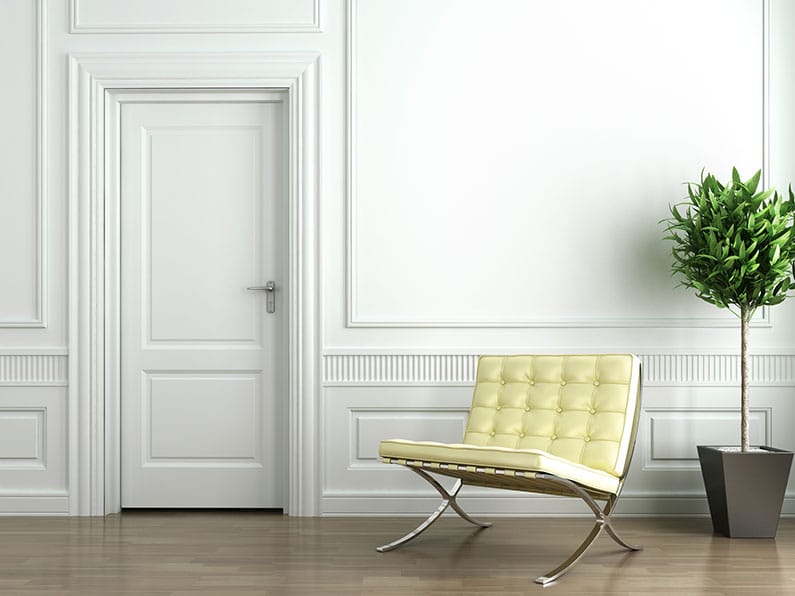
House Paint Type #4 — Stains and Varnishes
When it comes to the different house paint types, stains and varnishes are among the easiest to identify. Both are much thinner than other paint types, and while usually grouped together, there are a few differences between the two.
Varnish will not penetrate wood and remains on the exterior to provide a protective barrier. It’s usually transparent and clear, although some like TotalBoat Teak Wood Finish include a slight color to enhance the finish of the wood.
In contrast, stains penetrate the surface and bring out the wood’s natural beauty. Use stain to highlight the grain, change the tone, or intensify the wood’s natural color. Most stains will need a layer of varnish to protect the finish, although products like the Ready Seal Exterior Sealer and Stain act as a two in one.
One of the best things about these coatings is that they can be sprayed rapidly on expansive areas with paint sprayers like the Campbell Hausfeld, which frees up your time to focus on other DIY tasks.
What Are Stains and Varnishes Used For?
Pros
Cons
Check out my thoughts on the best paint sprayers for stains and varnishes.

House Paint Type #5 — Speciality House Paints
Without delving too deeply into each, here are a few pointers to consider before selecting a specialized paint. Detailed information is usually included on the tin or the manufacturer’s website, so check whether the paint is:
- Water or oil-based as this determines clean up and disposal and sometimes suitability for the task in question.
- Compatible with your paint sprayer and fluid nozzle.
- Needs primer or other surface preparation such as sanding.
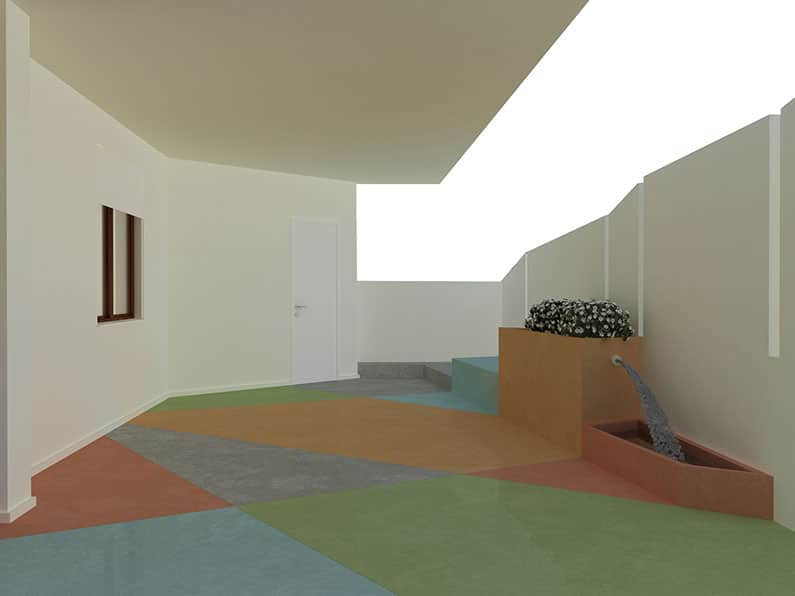
General House Paint Considerations
Water-Based Versus Oil-Based Paints
However, the downside is the much longer drying time — sometimes as long as 24 hours! Solvent-based mediums can’t be cleaned from your paint sprayer with just water, they require mineral spirits or thinner to get the job done.
Water-based coatings are the polar opposite of oil-based paints. They usually emit less odor and vapor, which gives them a reputation as a safer choice. While not quite as resistant, you do have the advantage that multiple coats can be completed in one day. These paints are also much easier to clean up.
A Quick Note on Sheens
For example, it’s a good idea to stay away from flat finishes when it comes to kid’s rooms, bathrooms, and kitchens. Matte paints don’t clean up well after cooking splatters or sticky hands. However, flat paint is ideal for ceilings as they’re not touched often. You can also create a fantastic ambiance with matte coatings as there is less reflective light, which can hide any imperfections.
Choose gloss for things like kitchen cupboards and doors as this finish is super easy to clean and wipe.
Prepare Properly With a Primer
Composed of solvent, synthetic resin, and an additive agent, primer is not designed to be the final layer. This said, a number of primers are tinted so that they match better with your final finish.
Depending on what you’re painting, you may need a dedicated primer. For example, Rust-Oleum 7780502 Primer is great for metal, while something like the Interior & Garage Floor Primer (also from Rust-Oleum) is a better choice for concrete.
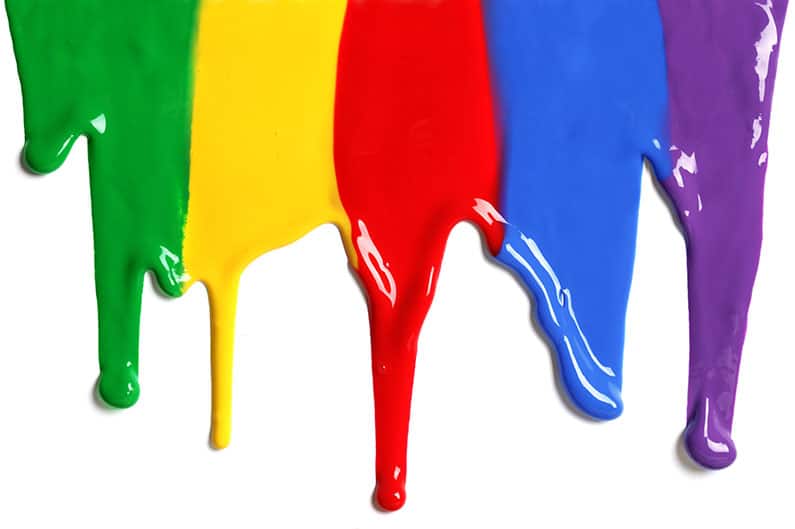
Disposing of House Paints
In a nutshell, to avoid creating a health hazard, damaging the environment, and to save money. Since there is usually some form of chemical in every coating, it wouldn’t be fair on wildlife to just throw it anywhere.
Additionally, some mediums are highly viscous, so pouring them down the sink would clog the plumbing and create more work, either for a plumber or yourself.
Regardless of the medium you’re discarding, always keep the paint container sealed tightly until you’re ready to throw it out. This stops coatings from drying out (in case you find a last-minute use) and prevents paint fumes from escaping.
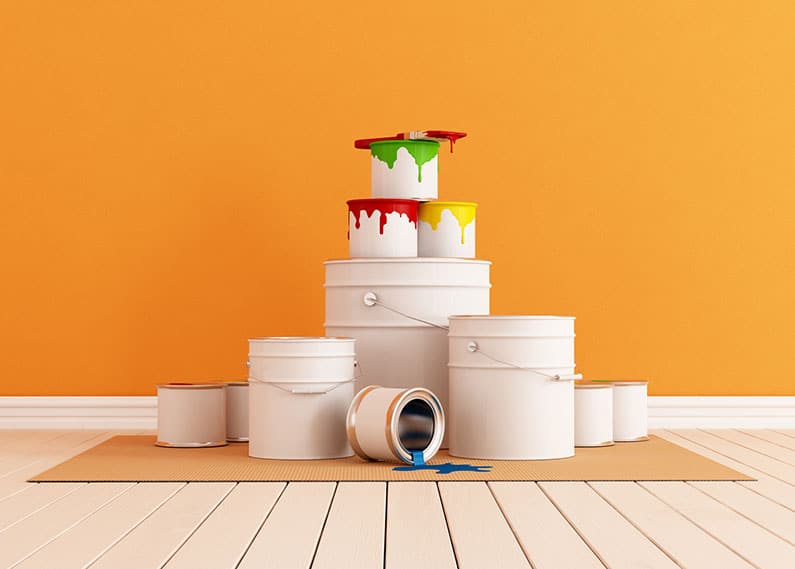
Safely Disposing of Water-Based Paint
Since latex and other water-borne paints are not hazardous, it’s okay to remove the paint can lid and place the paint in a well-ventilated area. Another handy tip is to add a cheap bag of cat litter to the paint to speed up the process.
Once the coating is dry and solid, remove it from the can and throw it into the regular trash. Then try to wash and recycle the paint tin if possible. If this isn’t an option, the paint can may be placed in the garbage with the lid off.
Responsible Oil-Based Paint Disposal
Since oil-based coatings are a slightly different kettle of fish, they shouldn’t be thrown in the trash. In some US states, this is even illegal! The best plan is to take the paint to your city’s household hazardous waste facility. Ensure the paint tins are closed firmly to prevent leaks in your trunk.
Another option is to take the paint to a local household hazardous waste event. Most cities will hold this event at least once per year. For an even more eco-friendly option, visit PaintCare.org if you live in Washington D.C, Vermont, Rhode Island, Oregon, Minnesota, Maine, California, Colorado, or Connecticut. Paint Care offers a take-back service focused on recycling.
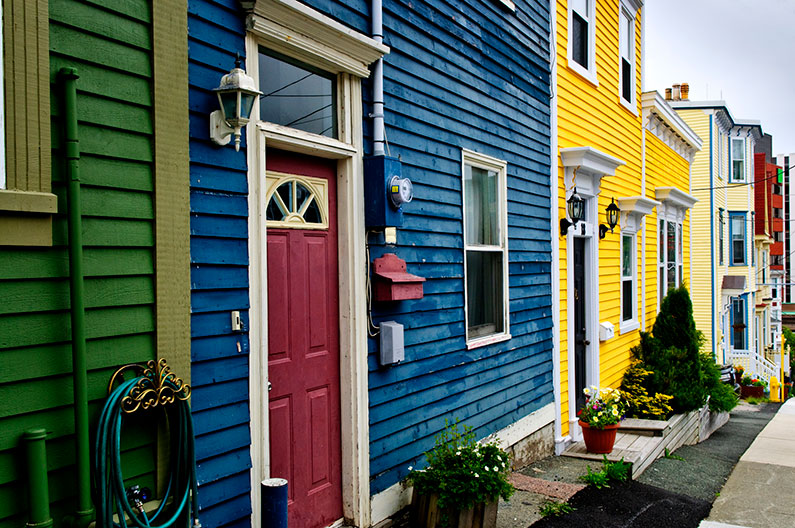
Conclusion
You also want to ensure your paint is compatible with your paint sprayer. If it’s not and you’ve already bought the paint, then it’s a good excuse to shop for a new device!
If you have any DIY projects coming up, remember to pin this page to your favorites!
Common House Paint Types FAQs
Q: What Are the Different Types of Paints?
There are a multitude of different paints available but all fall into two categories: water or oil-based coatings. Within these two groups, there are latex, acrylic, enamel, stains, varnishes, and primers. Specialized paints such as epoxy, fire retardant, and chalkboard mediums are also available.
Q: Which Paint Type Is Best For the Home?
It comes down to what you are painting. Latex and acrylics are good for interior walls while enamels are well suited to cabinetry and bathrooms. For a complete overview, check out our full guide above.
Q: Which Type of Paint Is Best For Interior Walls?
Latex paint is a great (and affordable) option for bringing color to your interior walls. Alternatively, you may prefer an acrylic medium.
Q: What Is the Strongest Type of Paint?
If you are looking for a strong durable paint, something like Seal-Krete Epoxy Coating could fit your needs.
Q: How Do I Choose a Suitable Paint?
First, determine the size of the project and the surface you’re painting. For example, are you painting a small piece of furniture or a large wall? Then check out the guide above to see which coating is most suitable.
Q: When Painting a Wall Where Do You Start?
When painting a wall, it’s a good idea to complete any cutting-in first and then move on to the larger expanse. For more information, head to our how to paint a wall guide.

